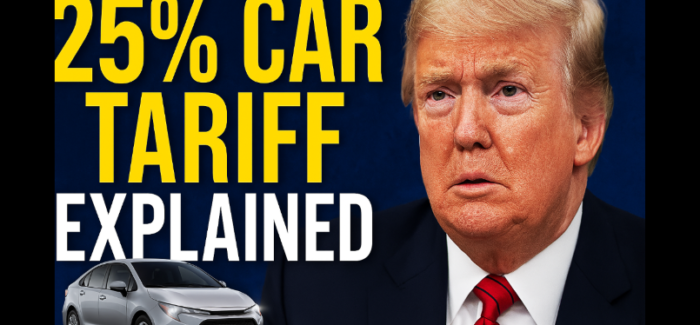Imported Cars Just Got More Expensive – Here’s Why
The rollercoaster ride of tariffs is back on track, and this time it seems more serious. President Donald Trump just signed a new executive order placing a 25 percent tariff on all vehicles not built in the United States. From the Oval Office, he claimed this would kick-start growth in the automotive sector and help the United States auto industry “flourish like never before.”
This tariff is set to go into effect on April 2, unless something changes again—which is not out of the question. Trump said the new tariff will remain in place for the duration of his presidency. On top of that, he is also pushing for a new tax break aimed at buyers of American-made cars. If Congress approves the plan, interest on new car loans would become tax-deductible, but only for those buying vehicles assembled in the United States.
There is already some confusion when it comes to auto parts. According to Trump, parts made in the United States that are shipped out and come back for final assembly in American-built vehicles will not face tariffs. But if those parts are used in cars manufactured outside the country, the finished vehicles will be hit with the new tax.
This change could mean big price increases for popular vehicles from companies based in Japan, South Korea, and Germany. But it is not just foreign brands—some American models will get more expensive too. Vehicles like the Chevrolet Silverado, which is built in both the United States and Mexico, might see mixed pricing depending on the origin. The Ford Maverick, made in Mexico, is another example of a vehicle that could be impacted.
So, if you are in the market for a new car, expect things to get a little complicated. And for automakers trying to juggle international supply chains, it is about to get even tougher.


Submit a Comment